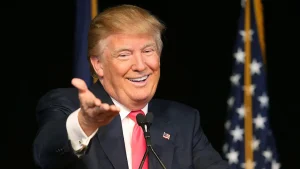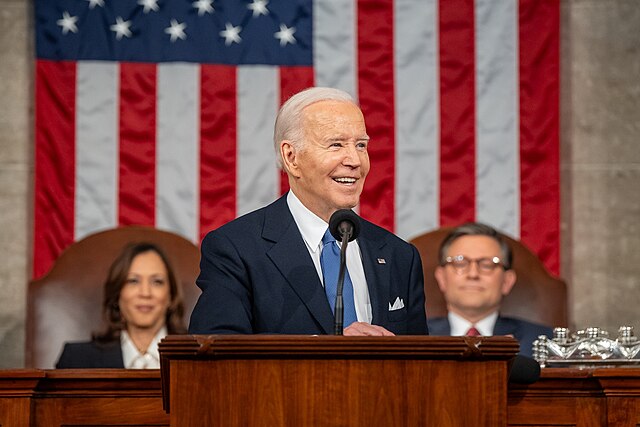Emails Shed New Light on Last-Minute White House Actions
The final days of any presidency are often marked by flurries of executive orders, last-minute regulations, and in some cases, controversial clemency decisions. Newly disclosed emails are now bringing to the surface questions about how those closing actions were carried out in the waning hours of the Biden administration.
At issue are thousands of pardons and commutations that were signed and issued during President Joe Biden’s final week in office. While presidential clemency is nothing new, what makes this case different is how the signatures were applied—and who may have authorized them.
Internal Concerns at the DOJ
The Justice Department plays an important role in reviewing clemency requests, ensuring that each case is vetted for legal and public safety considerations. According to the emails, senior DOJ officials grew increasingly uneasy about how quickly pardons were being processed in January 2025.
Associate Deputy Attorney General Bradley Weinsheimer warned in one message that certain documents signed at the time carried “highly problematic” language. He emphasized that the phrasing of a sweeping warrant for hundreds of commutations risked rendering them legally ineffective.
More alarming to some officials was the possibility that the orders might have extended beyond their intended scope. Weinsheimer noted that crimes of violence, including murder, could have been unintentionally included in the batch of approvals.
The Role of Senior White House Staff
The records show that top aides—including Neera Tanden, Jeff Zients, and Stephanie Feldman—were closely involved in overseeing the process. According to internal communications, staffers often pushed approvals through without a full round of reviews from the Justice Department.
In some instances, names were added or swapped on clemency lists without direct confirmation from Biden himself. The changes raised immediate concerns about accountability and whether the president was even aware of all the individuals being granted pardons or commutations.
The Autopen Factor
The most unusual revelation, however, involves the way the documents were signed. Investigators determined that two distinct autopen machines were used in the final wave of approvals. These devices, labeled Autopen A and Autopen B, produced slightly different signature patterns but both imitated Biden’s hand.
While the autopen has been employed by presidents in limited circumstances—such as routine document signings when they are traveling—its use in thousands of high-stakes clemency decisions is unprecedented.
DOJ officials, according to the emails, questioned not only the legality of relying on an autopen for executive pardons but also whether the rushed process ignored established standards. One internal complaint stated that the department had been “cut out entirely,” despite objections from victims’ families in some of the cases.
High-Profile Cases Raise Alarm
Among the files flagged by DOJ staff were pardons for individuals convicted of serious crimes, including the murders of police officers and children. The inclusion of such cases fueled internal debate about whether the commutations had been vetted at all.
Ed Martin, a DOJ official who has been reviewing the matter, confirmed earlier this year that the department is examining how the clemency approvals were processed. Advocacy groups have pointed to the lack of transparency, arguing that victims’ rights may have been disregarded.
Political Fallout and Unanswered Questions
The autopen pardons have since become the focus of watchdog groups, members of Congress, and legal experts. The Washington Times reported that the DOJ’s own lawyers believed the orders undermined legal standards and could be vulnerable to court challenges.
The White House, for its part, has offered little comment on the controversy. Former aides have defended the practice as an attempt to fulfill Biden’s broader commitment to criminal justice reform before leaving office. Still, the emails suggest that the scope of those decisions went well beyond what many expected.
The Bigger Picture
The use of executive clemency has always been contentious, particularly when it comes in the closing days of a presidency. Critics argue that last-minute pardons often escape scrutiny, while supporters claim they allow presidents to deliver justice without political pressure.
In Biden’s case, however, the reliance on an autopen raises fundamental questions. Was the president personally involved in every decision? Or did staffers move forward without his direct approval? The emails appear to suggest the latter.
What began as a typical end-of-term clemency process has now turned into something far more controversial. The records show that many of Biden’s final pardons and commutations were not signed by him at all but were authorized through an autopen. Despite repeated warnings from Justice Department officials, aides pressed forward, approving broad clemency orders that may have inadvertently freed violent offenders.
The debate is now less about who received pardons and more about how they were granted—and whether the practice undermined the legality of one of the most serious presidential powers.

James Jenkins is a celebrated Pulitzer Prize-winning author whose work has reshaped the way readers think about social justice and human rights in America. Raised in Atlanta, Georgia, James grew up in a community that instilled in him both resilience and a strong sense of responsibility toward others. After studying political science and creative writing at Howard University, he worked as a journalist covering civil rights issues before dedicating himself fully to fiction. His novels are known for their sharp, empathetic portraits of marginalized communities and for weaving personal stories with broader political realities. Jenkins’s breakout novel, Shadows of Freedom, won national acclaim for its unflinching look at systemic inequality, while his more recent works explore themes of identity, resilience, and the fight for dignity in the face of oppression. Beyond his novels, James is an active public speaker, lecturing at universities and participating in nonprofit initiatives that support literacy and community empowerment. He believes that storytelling is a way to preserve history and inspire change. When not writing, James enjoys jazz music, mentoring young writers, and traveling with his family to explore cultures and stories around the world.









